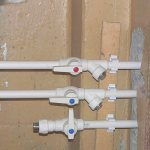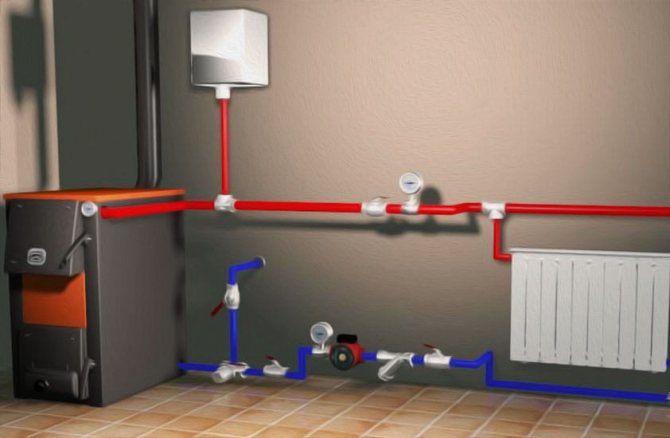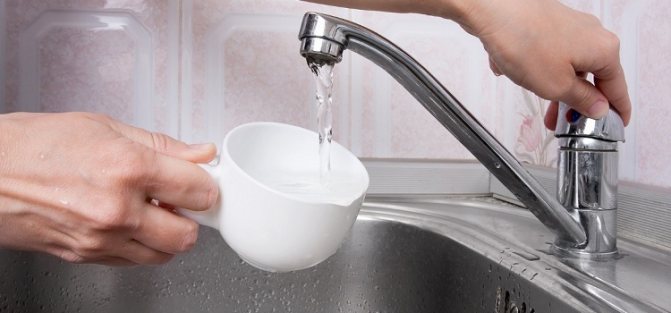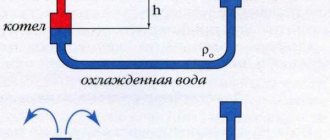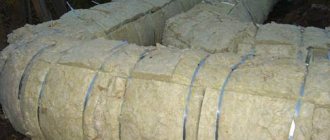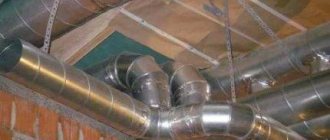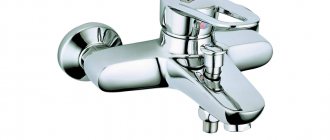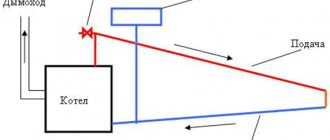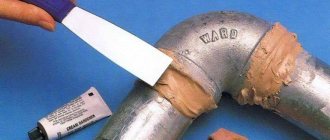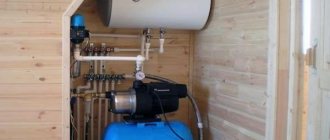Calculation methods
To determine the permeability of the water supply system, you can use three calculation methods:
- The physical way. To find out the indicators, formulas are used. To calculate, knowledge of several parameters is required, in particular, the size of the section of the pipe section and at what speed the water moves in the pipeline.
- Tabular method. It is the simplest one, because by picking up the indicators in the table, you can immediately find out the necessary data.
The last method, although the most accurate, is not suitable for calculating ordinary household communications. It is quite complex, and for its application you will need to know a variety of indicators. To calculate a simple network for a private house, you should resort to using an online calculator. Although not as accurate, it is free and does not need to be installed on a computer. You can get more accurate information by comparing the data calculated by the program with the table.
Determination of water consumption with a possible drop in pressure
The considered formula for determining the water flow rate by the inner diameter of the pipe and the water flow rate is considered simplified. It does not take into account the change in head under the influence of circumstances that can lead to a lower or higher pressure in the pipeline system. Darcy's formula allows you to make a calculation that takes into account the losses at the extreme points of the pipeline. It looks like this:
ΔΡ = λL / D * V2 / 2gρ
The following parameters are taken into account in the Darcy formula:
P is the viscosity; λ - coefficient of friction, the value of which is determined:
- the configuration of the pipeline, straight or having complex turns and bends;
- turbulence in the flow of water;
- roughness of the inner surface of the pipes;
- the presence of obstacles in the form of sections with the use of valves.
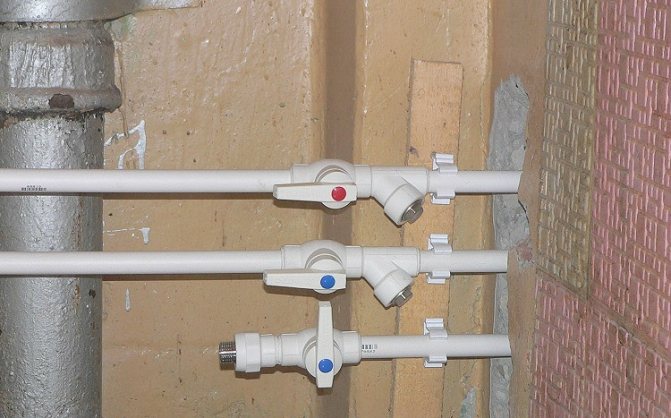
The coefficient of friction is influenced by the presence of locking elements and their number
L is the length of the pipes; D is the size of the internal section; V is the speed of movement of the water flow; g is the acceleration of gravity.
Calculation of water leakage along the cross section of the pipe - Pipes and plumbing
How to easily calculate the water consumption by the diameter of the pipe? After all, contacting public utilities with a preliminary drawn up diagram of all water supply systems in the area is quite troublesome.
Why do we need such calculations
When drawing up a plan for the construction of a large cottage with several bathrooms, a private hotel, organization of a fire system, it is very important to have more or less accurate information about the transporting capabilities of the existing pipe, taking into account its diameter and pressure in the system. It's all about pressure fluctuations during the peak of water consumption: such phenomena quite seriously affect the quality of the services provided.
In addition, if the water supply system is not equipped with water meters, then when paying for utility services, the so-called. "Passability of the pipe". In this case, the question of the tariffs applied in this case is quite logical.
At the same time, it is important to understand that the second option does not apply to private premises (apartments and cottages), where, in the absence of meters, when calculating payment, sanitary standards are taken into account: usually it is up to 360 l / day per person.
Nominal pressure parameter PN
The value of the nominal pressure PN (the value corresponding to the limiting pressure level of the pumped media at 20 ° C) is calculated to determine the long-term operation of the pipeline network with the specified parameters. The nominal pressure parameter is a dimensionless value, calibrated based on operating practice.


The nominal pressure parameter for specific pipeline systems is selected based on the actual stress by determining the maximum value. Fittings and fittings correspond to the obtained data. To ensure normal operation of the systems, the pipe wall thickness is calculated from the nominal pressure.
Methods for calculating the dependencies of water flow rate and pipeline diameter
Using the formulas below, you can both calculate the water flow in the pipe and determine the dependence of the pipe diameter on the water flow.
In this water consumption formula:
- q is the flow rate in l / s,
- V - determines the speed of the hydraulic flow in m / s,
- d - internal section (diameter in cm).
Knowing the flow rate and d of the section, it is possible, using inverse calculations, to set the speed, or, knowing the flow rate and speed, to determine the diameter. In the case of an additional supercharger (for example, in high-rise buildings), the pressure generated by it and the hydraulic flow rate are indicated in the instrument's passport. Without additional injection, the flow rate most often varies in the range 0.8-1.5 m / s.
For more accurate calculations, head losses are taken into account using Darcy's formula:
To calculate, you must additionally install:
- pipeline length (L),
- loss factor, which depends on the roughness of the pipeline walls, turbulence, curvature and sections with stop valves (λ),
- fluid viscosity (ρ).
The relationship between the D value of the pipeline, the hydraulic flow rate (V) and the water flow rate (q), taking into account the slope angle (i), can be expressed in a table where two known quantities are connected by a straight line, and the value of the desired quantity will be seen at the intersection of the scale and the straight line.
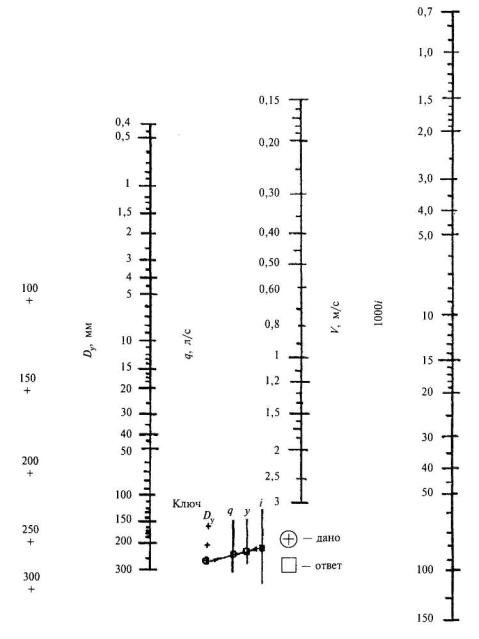

For technical justification, graphs of the dependence of operating and capital costs are also built with the determination of the optimal value of D, which is set at the intersection of the curves of operating and capital costs.
The calculation of the water flow through the pipe taking into account the pressure drop can be carried out using online calculators (for example: https://allcalc.ru/node/498; https://www.calc.ru/gidravlicheskiy-raschet-truboprovoda.html). For the hydraulic calculation, as in the formula, you need to take into account the loss factor, which implies the choice:
- method of calculating resistance,
- the material and type of piping systems (steel, cast iron, asbestos, reinforced concrete, plastic), where it is taken into account that, for example, plastic surfaces are less rough than steel and do not corrode,
- inner diameters,
- section length,
- pressure drop for each meter of the pipeline.
Some calculators take into account additional characteristics of piping systems, for example:
- new or not new with bituminous coating or without internal protective coating,
- with external plastic or polymer-cement coating,
- with external cement-sand coating, applied by different methods, etc.
The calculator is easy to use - enter data and get the result. But sometimes this is not enough - an accurate calculation of the pipe diameter is possible only with manual calculation using formulas and correctly selected coefficients. How to calculate the diameter of the pipe according to the water flow rate? How to determine the size of the gas line?


Pipeline and parts necessary to it
When calculating the required pipe diameter, professional engineers most often use special programs that can calculate and give an accurate result using known parameters. It is much more difficult for an amateur builder to carry out the calculation on his own for organizing water supply, heating, gasification systems. Therefore, most often when building or renovating a private house, the recommended pipe sizes are used.But not always standard advice can take into account all the nuances of individual construction, therefore, it is required to manually perform a hydraulic calculation in order to correctly select the diameter of the pipe for heating, water supply.

